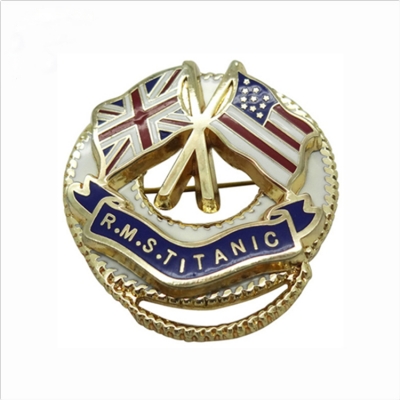A lapel pin, also known as an enamel pin, is a small pin worn on clothing, often on the lapel of a jacket, attached to a bag, or displayed on a piece of fabric. In the manufacturing process, there are five basic types of pins:
Hard Enamel
Hard enamels are made from solid pieces of resin or glass that are cured at much higher temperatures than soft ones. A hard enamel lapel pin starts out much like one produced using soft enamel, but a significantly more involved process follows.
Resins of the chosen colours are added to appropriate parts of the pin and cured one at a time, with each then being polished to bring it down to the level of the pin‘s exposed ridges. Finally, the pin will be electroplated before being polished one last time. The prices are higher than the soft enamel
Soft enamel
The lapel pin will firstly be stamped or die casted to the recessed areas or ridges needed to contain the relatively free-flowing enamel. The appropriately shaped pin will then be plated with an one of our metal finishes like misty gold, silver, nickel, or copper look, after which enamel paint will be applied.
One distinctive feature of this type of lapel pin is that the level of the cured enamel will remain well below the surrounding metal ridges, giving it a textured feeling and look. Lapel pins with soft enamel, can also be finished with an epoxy dome.
Photo etched
In the photo etch process, only the shape of the piece is stamped out. The design on the face of the pin is chemically etched into the base metal, then color-filled by hand and baked before being polished. In the final step, a thin coat of clear epoxy can be applied to the surface.
Photo dome
Photo dome process begins by printing the art or design on vinyl or paper and then applying it to a metal pin base. The vinyl is then coated with an epoxy dome that protects the art from wear and the elements. This process is gaining in popularity because of advances in printing resolutions and the ability to complete these pins quickly.
Silk Screen printed
Silk screening printed is produced by applying each color to the metal base using a "silk screen" process. A very thin epoxy coat protects the color material from scratching.
4-color CMYK offset process
The colors are printed in the traditional CMYK process. This style is can be used for complex art and photo reproduction. An unlimited number of colors can be used.
Please kindly contact our experienced and knowledgeable staff to get your own lapel pins.








